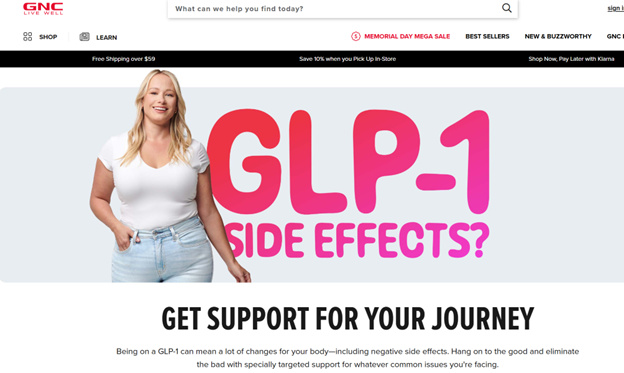Today, I spoke live with Paul Bagnell, news anchor with Bloomberg BNN, on the topic of the GLP-1 agonists and their impact on health care, industries beyond health and medicine, and consumers. In this post, I’ll share with you some of the plotline for our discussion. 
Gallup polled U.S. adults in March to gauge their experience with injectable weight loss drugs, the results published earlier this week. The first chart tells us that 6% of people have used these drugs, and 3% were doing so in March. Consumers using the meds were more likely to be between 40 and 64 years of age.
Nearly 2 in 3 of these GLP-1 users said the drugs were effective for their weight loss; fewer (1 in 2) people 65 and older felt the drugs were effective for them.

In Canada, Daalhousie University’s Agri-Food Analytics Lab studied Canadian adults’ use of GLP-1s and impact on food consumption trends in the nation. The study was published in March 2024, and found that about 10% of adults in Canada had used a GLP-1 type drug — between 900,000 and 1.4 million consumers.
While the U.S. and Canadian health systems are quite different in terms of financing and delivery of services, the Dalhousie research team found that their results of per capita adult use of the GLP-1 medicines was consistent with consumption in the United States.
Although Canada does not allow the kind and level of direct-to-consumer advertising for prescription drugs, an opinion piece in Campaign in Canada, the marketing and ad industry publication that’s a sister to a U.S. version, noted, “Ozempic Proves Canada Must Update Dtc Advertising Rules.”
The point is that even if you live in Canada and receive health benefits through the province you live in, you are also a consumer who consumes media — and you’ve been exposed to information and images published online, in print and via broadcast channels that have exposed you to the GLP-1 phenomenon.
Example: Oprah and Weight Watchers.

As patients (whether in the U.S. or Canada) take on more consumer behaviors for their health and wellbeing, they are seeking care across sites beyond clinics and doctors’ offices — notably online via telehealth and ecommerce channels as well as retail health environments like medi-spas or nutrition shops.
21% of U.S. adults who have used GLP-1 medicines got them from either online providers or medi-spas/aesthetic medical centers, the May 2024 Kaiser Family Foundation Health Tracking Poll learned.

Within months of GLP-1 prescriptions written for obesity and overweight, JP Morgan analysts wrote an influential report on the drug category and implications for the health care industry–and other sectors, notably food and beverage consumption.
We can point to an example of this impact announced earlier this week by Nestlé launching Vital Pursuit, a line of frozen food meals focused on consumers taking GLP-1 medicines akin to the weight-loss focused Lean Cuisine line the company started up back in 1981 as part of the Stouffer’s line of frozen foods.
34 years later, medically-tailored meals and food-as-medicine are a phenomenon taking hold in health care — and Big Food and other manufacturers want in on that market.

So do other forms of self-care and retail health; consider GNC, the vitamin and supplement retailer, which recently launched a telehealth service. GNC now offers “support” for folks using GLP-1 drugs to help manage side effects such as gut disruptions, muscle loss, and other aspects of living with the drug and the impacts of rapid weight loss.

You can tune into my interview with Paul Bagnell, Bloomberg BNN Anchor, here.
Yours in health and well-being….





 Thanks to Feedspot for naming this blog, Health Populi, as a
Thanks to Feedspot for naming this blog, Health Populi, as a